Supporting Sumatran elephants in the Leuser ecosystem, Indonesia
Elephants need secure space and forest to forage in. And that’s diminishing quickly in Indonesia. The island of Sumatra has suffered heavy forest loss which means space is at a premium for people and the wildlife they live alongside. And elephants need a lot of space. Luckily funds have been pledged to expand the wildlife sanctuaries. The key was to find out which areas should be protected, which would be most beneficial for the elephants. What habitat features determine the travel routes and habitat use of Sumatran elephants? What is the minimum area required per elephant to maintain a healthy population?
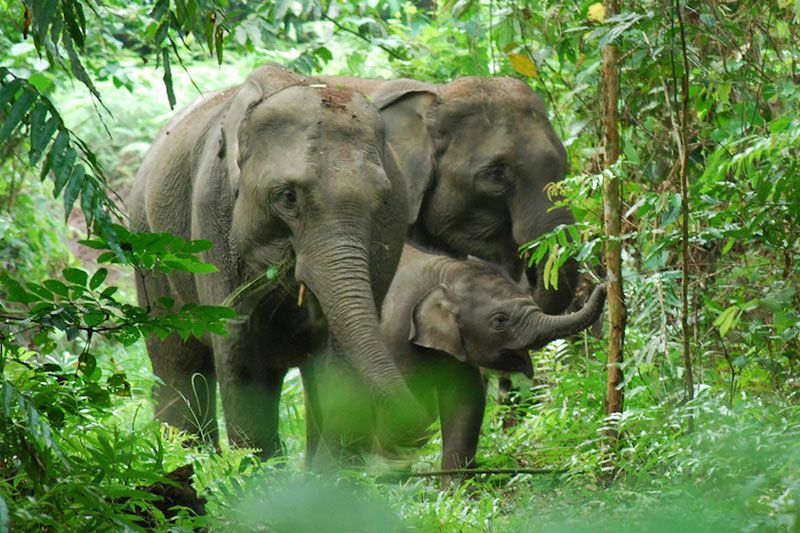
Image credit Suprayudi Rimba.
Elephant habitat use
Professor Amanda Korstjens and her team from Bournemouth University worked within the Sikundur lowland site to work out the main characteristics that shaped elephant habitat use. To work out which areas of the forest the elephants were using more frequently, they mapped out 10 x 1km transects in Sikundur and 12 in Soraya. Students Nikki and Lucy walked each transect up to four times each over a five month period recording each pile of elephant dung that they came across. They also recorded what the vegetation was like at regular intervals, including where the dung piles were found. This enabled them to work out which types of areas were used more regularly by elephants.
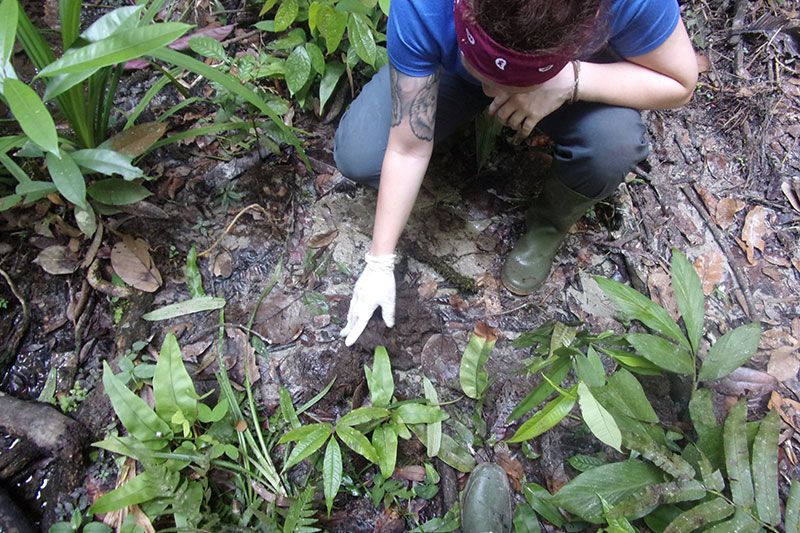
Looking for field signs. 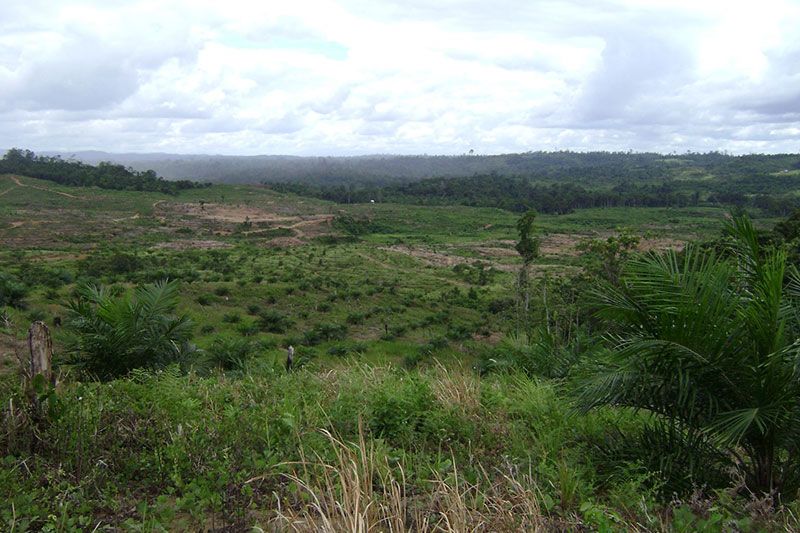
Converted forest. 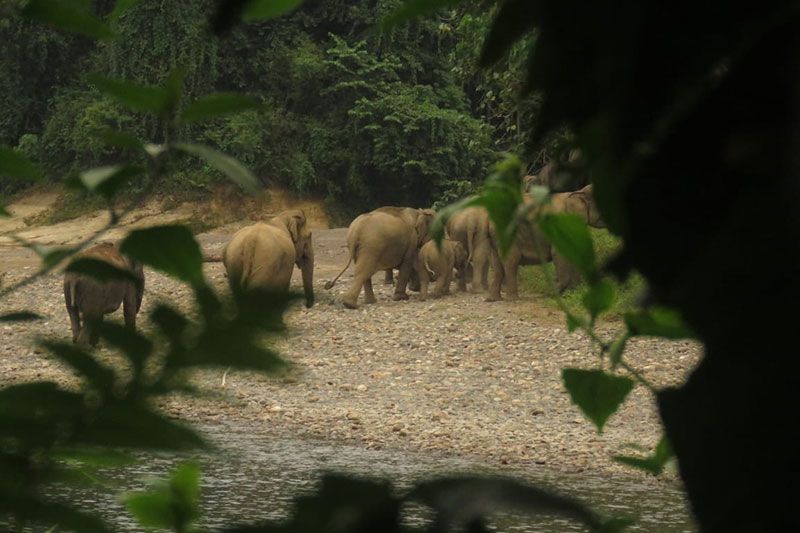
Image credit Supri Ketambe.
Using their data and other evidence and knowledge, from Dr Abdullah from Syiah Kuala University and local rangers, it appears that Sumatran elephants retreat into the old growth forest during the hottest times of the day and come to the river side and crop areas in the cooler times of day. All research indicates that old-growth forest is essential for Sumatran elephants to survive, but that as suitable forest patches are disappearing the animals begin to forage in crop lands due to lack of natural foraging habitat.
Maintaining wildlife corridors
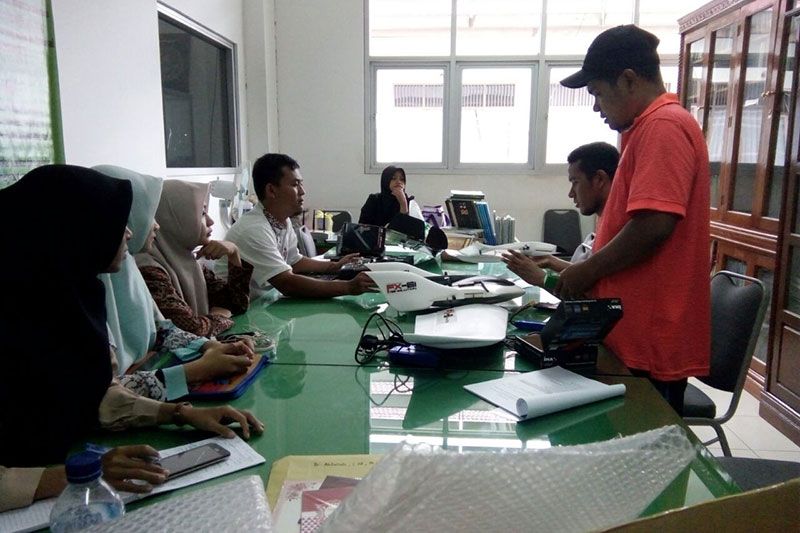
The drone purchased with PTES funding is used in a PTES and BU supported training session for Indonesian students. Image by Dr Abdullah from Universitas Syiah Kuala.
Now the team are continuing to gather information on which parts of surrounding land should be bought and protected to maintain corridors and buffers for the Sumatran elephants. Even lowland farmland can be suitable. Forum Konservasi Leuser, the local NGO led by Rudi Putra, has recently bought a large area of this type of land near Lokop. Mandy and her group will be using an unmanned aerial vehicle (UAV) – bought with PTES funds and used to map the habitat in Sikundur – to monitor how well and how quickly the farmland changes as the forest and biodiversity recovers.
Working with the local communities
One tool they are using in supporting elephant conservation action and awareness is art. Together with artists from Invisible Flock they are running project Inaudible. This art-science project includes engaging ‘The Wild Econerds’ (a group of young people) in co-developing a large arts installation on the plight of elephants at Eureka! The National Children’s museum.
Protecting primary old forest is vital. It’s also important to work with the local people living alongside these hungry giants. Crop raiding is a problem. Once animals realise that fields provide a plentiful source of food, some develop a preference for this high quality forage. Not only does crop raiding completely destroy people’s livelihood, but elephants are large, dangerous and difficult to deter.

Locals are asked about their perceptions of wild elephants. Image credit Lucy Twitcher
Amanda’s students, Helen, Meryl, Emma and Lucy have also been gathering data from locals on their perceptions of elephants and other wildlife that raid their crops so that they can begin to work to change attitudes. Unsurprisingly the communities can suffer really high levels of stress which hurts their health, as well as risking their livelihoods. The team is working on a way to provide communities with alerts before elephants reach their fields so that they’re able to prevent the raiding. There’s more work to do but the progress that Mandy and her team have achieved is a big step forward in helping ensure Sumatran elephants face a safer future, one they can share with the people they live alongside.
Follow this project and other work by the LEAP team here, or follow Amanda Korstjens on Twitter.
Thank you for helping us fund this research to protect Sumatran elephants.
If you’d like to support this work, please donate or set up a direct debit here today.
Thank you.
